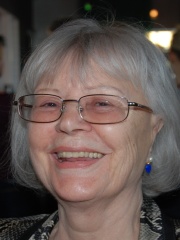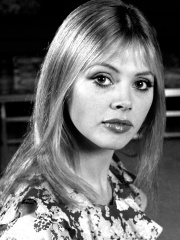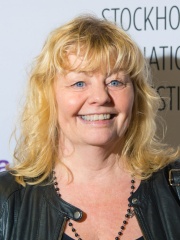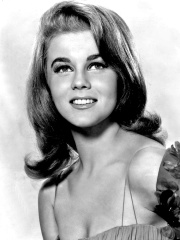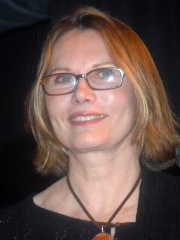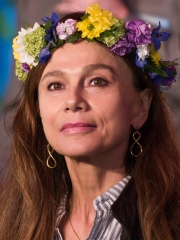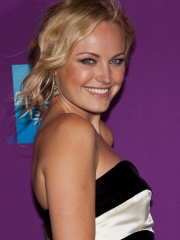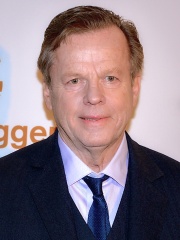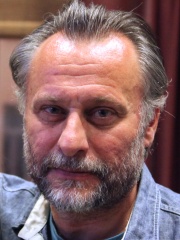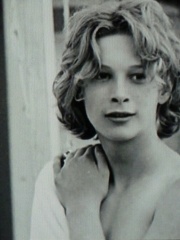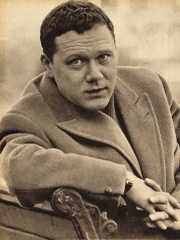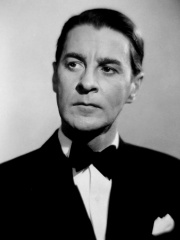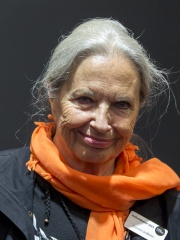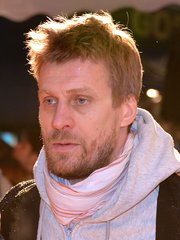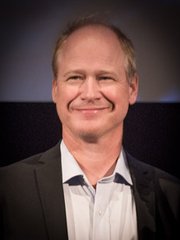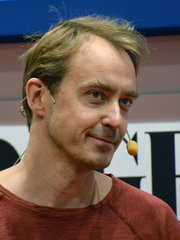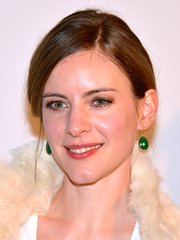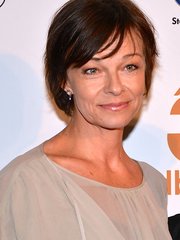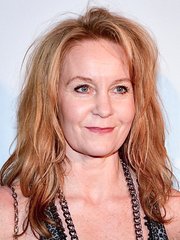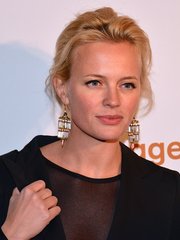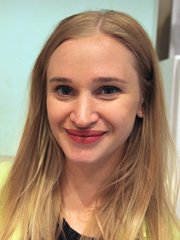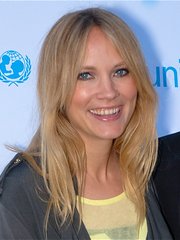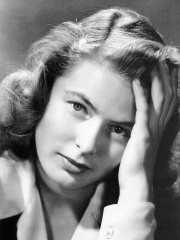
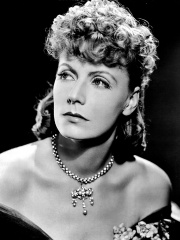
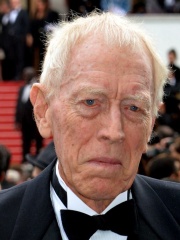
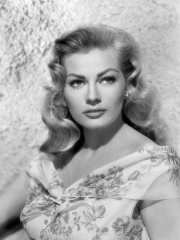
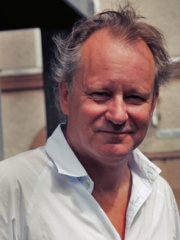
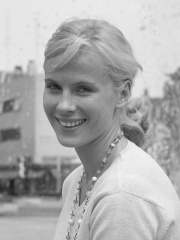
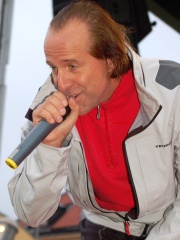
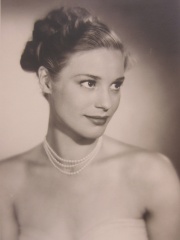
The Most Famous
ACTORS from Sweden
Top 10
The following people are considered by Pantheon to be the top 10 most legendary Swedish Actors of all time. This list of famous Swedish Actors is sorted by HPI (Historical Popularity Index), a metric that aggregates information on a biography's online popularity. Visit the rankings page to view the entire list of Swedish Actors.

1. Ingrid Bergman (1915 - 1982)
With an HPI of 79.42, Ingrid Bergman is the most famous Swedish Actor. Her biography has been translated into 97 different languages on wikipedia.
Ingrid Bergman (29 August 1915 – 29 August 1982) was a Swedish actress. With a career spanning five decades, Bergman is often regarded as one of the most influential actresses in the history of cinema. She won numerous accolades, including three Academy Awards, two Primetime Emmy Awards, and a Tony Award; these accolades made her the youngest performer to achieve the Triple Crown of Acting and one of only four actresses to have received at least three acting Academy Awards (only Katharine Hepburn has four). Born in Stockholm to a Swedish father and German mother, Bergman began her acting career in Swedish and German films. Her introduction to the U.S. audience came in the English-language remake of Intermezzo (1939). Known for her naturally luminous beauty, she starred in Casablanca (1942) as Ilsa Lund. Bergman's notable performances in the 1940s include the dramas For Whom the Bell Tolls (1943), Gaslight (1944), The Bells of St. Mary's (1945), and Joan of Arc (1948), all of which earned her nominations for the Academy Award for Best Actress; she won for Gaslight. She made three films with Alfred Hitchcock: Spellbound (1945), Notorious (1946), and Under Capricorn (1949). In 1950, she starred in Roberto Rossellini's Stromboli, released after the revelation that she was having an affair with Rossellini; that and her pregnancy before their marriage created a scandal in the U.S. that prompted her to remain in Europe for several years. During this time, she starred in Rossellini's Europa '51 and Journey to Italy (1954), the former of which won her the Volpi Cup for Best Actress. The Volpi Cup was not awarded to her in 1952 because she was dubbed (by Lydia Simoneschi) in the version presented at the Festival; she was awarded posthumously in 1992, and the prize was accepted by her son Roberto Rossellini. She returned to Hollywood, earning two more Academy Awards for her roles in Anastasia (1956) and Murder on the Orient Express (1974). During this period she also starred in Indiscreet (1958), Cactus Flower (1969), and Autumn Sonata (1978) receiving her sixth Best Actress nomination. Bergman won the Tony Award for Best Actress in a Play for the Maxwell Anderson play Joan of Lorraine (1947). She also won two Primetime Emmy Awards for Outstanding Lead Actress in a Limited Series or Movie for The Turn of the Screw (1960), and A Woman Called Golda (1982). In 1974, Bergman discovered she was suffering from breast cancer but continued to work until shortly before her death on her sixty-seventh birthday in 1982. Bergman spoke five languages—Swedish, English, German, Italian, and French—and acted in each. In 1999, the American Film Institute recognized her as the fourth-greatest female screen legend of Classic Hollywood Cinema.

2. Greta Garbo (1905 - 1990)
With an HPI of 77.34, Greta Garbo is the 2nd most famous Swedish Actor. Her biography has been translated into 93 different languages.
Greta Garbo (born Greta Lovisa Gustafsson; 18 September 1905 – 15 April 1990) was a Swedish and American actress. She was a premier star during Hollywood's silent and early golden eras. Regarded as one of the greatest screen actresses of all time, she is known for her melancholic and somber screen persona, her film portrayals of tragic characters, and her subtle and understated performances. In 1999, the American Film Institute ranked Garbo fifth on its list of the greatest female stars of classic Hollywood cinema. Garbo launched her career with a secondary role in the 1924 Swedish film The Saga of Gösta Berling. Her performance caught the attention of Louis B. Mayer, chief executive of Metro-Goldwyn-Mayer (MGM), who brought her to Hollywood in 1925. She stirred interest with her first American silent film, Torrent (1926). Garbo's performance in Flesh and the Devil (1926), her third movie in the United States, made her an international star. In 1928, Garbo starred in A Woman of Affairs, which catapulted her to MGM's highest box-office star, surpassing the long-reigning Lillian Gish. Other well-known Garbo films from the silent era are The Mysterious Lady (1928), The Single Standard (1929), and The Kiss (1929). With Garbo's first sound film, Anna Christie (1930), MGM marketers enticed the public with the tagline "Garbo talks!" That same year she starred in Romance and for her performances in both films she received her first combined nomination out of three nominations for the Academy Award for Best Actress. By 1932 her success allowed her to dictate the terms of her contracts and she became increasingly selective about her roles. She continued in films such as Mata Hari (1931), Susan Lenox (Her Fall and Rise) (1931), Grand Hotel (1932), Queen Christina (1933), and Anna Karenina (1935). Many critics and film historians consider her performance as the doomed courtesan Marguerite Gautier in Camille (1936) to be her finest and the role gained her a third Academy Award nomination. However, Garbo's career soon declined and she became one of many stars labelled box office poison in 1938. Her career revived with a turn to comedy in Ninotchka (1939), which earned her a fourth Academy Award nomination. Two-Faced Woman (1941), a box-office flop, was the last of her 28 feature films. Following this commercial failure, she continued to be offered movie roles, though she declined most of them. Those she did accept failed to materialize, either due to lack of funds or because she dropped out during filming. In 1954, Garbo was awarded an Academy Honorary Award "for her luminous and unforgettable screen performances". Over time, Garbo would decline all opportunities to return to the screen. In her retirement, she shunned publicity, led a private life, and became an art collector whose paintings included works by Pierre-Auguste Renoir, Pierre Bonnard and Kees van Dongen. Although she refused throughout her life to talk to friends about her reasons for retiring, four years before her death, she told Swedish biographer Sven Broman: "I was tired of Hollywood. I did not like my work. There were many days when I had to force myself to go to the studio ... I really wanted to live another life."

3. Max von Sydow (1929 - 2020)
With an HPI of 74.44, Max von Sydow is the 3rd most famous Swedish Actor. His biography has been translated into 64 different languages.
Max von Sydow (Swedish pronunciation: [maks fɔn ˈsyːdɔv]; born Carl Adolf von Sydow; 10 April 1929 – 8 March 2020) was a Swedish and French actor. He had a 70-year career in European and American cinema, television, and theatre, appearing in more than 150 films and several television series in multiple languages. Capable in roles ranging from stolid, contemplative protagonists to sardonic artists and menacing, often gleeful villains, von Sydow received numerous accolades including honors from the Cannes Film Festival and the Venice Film Festival. He was nominated for two Academy Awards: for Best Actor for Pelle the Conqueror (1987) and for Best Supporting Actor for Extremely Loud & Incredibly Close (2011). Von Sydow was first noticed internationally for playing the 14th-century knight Antonius Block in Ingmar Bergman's The Seventh Seal (1957), which features iconic scenes of his character challenging Death to a game of chess. He appeared in eleven films directed by Bergman, including Wild Strawberries (1957), The Virgin Spring (1960), Through a Glass Darkly (1961), Winter Light (1963), Shame (1968), and The Touch (1971). Von Sydow made his American film debut as Jesus Christ in the Biblical epic film The Greatest Story Ever Told (1965) and went on to star in films such as Hawaii (1966), The Exorcist (1973), Three Days of the Condor (1975), Flash Gordon (1980), Conan the Barbarian (1982) and the James Bond adaptation Never Say Never Again (1983). He also appeared in supporting roles in Dune (1984), Hannah and Her Sisters (1986), Awakenings (1990), Minority Report (2002), The Diving Bell and the Butterfly (2007), Shutter Island (2010), Robin Hood (2010), and Star Wars: The Force Awakens (2015). He portrayed the main antagonist Leland Gaunt (The Devil) in the film adaptation of Stephen King's Needful Things (1993). In 2016, he portrayed the Three-eyed Raven in the HBO fantasy series Game of Thrones, for which he was nominated for the Primetime Emmy Award for Outstanding Guest Actor in a Drama Series. Von Sydow received the Royal Foundation of Sweden's Cultural Award in 1954, was made a Commandeur des Arts et des Lettres in 2005, and was named a Chevalier de la Légion d'honneur on 17 October 2012.

4. Anita Ekberg (1931 - 2015)
With an HPI of 74.00, Anita Ekberg is the 4th most famous Swedish Actor. Her biography has been translated into 67 different languages.
Kerstin Anita Marianne Ekberg (29 September 1931 – 11 January 2015) was a Swedish actress active in American and European films, known for her beauty and curvaceous figure. She became prominent in her iconic role as Sylvia in the Federico Fellini film La Dolce Vita (1960). Ekberg worked primarily in Italy, where she became a permanent resident in 1964.
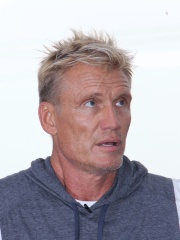
5. Dolph Lundgren (b. 1957)
With an HPI of 73.57, Dolph Lundgren is the 5th most famous Swedish Actor. His biography has been translated into 66 different languages.
Hans "Dolph" Lundgren (, Swedish: [ˈdɔlːf ˈlɵ̌nːdɡreːn] ; born 3 November 1957) is a Swedish actor, filmmaker, and martial artist. He gained recognition for portraying the Soviet boxer Ivan Drago in his breakthrough role in Rocky IV (1985), a role he later reprised in Creed II (2018). Lundgren went on to play lead roles in over 80 action-oriented films including Masters of the Universe (1987), Red Scorpion (1988), The Punisher (1989), I Come in Peace (1990), Showdown in Little Tokyo (1991), Joshua Tree (1993), Men of War (1994), Silent Trigger (1996), and Blackjack (1998). He continued playing villainous roles, most notably as Sergeant Andrew Scott in three Universal Soldier films (1992–2012), co-starring Jean-Claude Van Damme. Moving into the 2000s, Lundgren mostly appeared in direct-to-video films. During this time, Lundgren started directing and starring in his own films; these are The Defender (2004), The Mechanik (2005), Missionary Man (2007), and Command Performance (2009). Lundgren returned to prominence in 2010 with the role of Gunner Jensen in Sylvester Stallone's The Expendables alongside an all-action star cast. He reprised his role in its sequels. He has since appeared in the well-received films Aquaman (2018), Castle Falls (2021), which he also directed, Don't Kill It (2017), and Showdown at the Grand (2023), among others. He has appeared in SAF3 (2013–2014) and Arrow (2016–2017). His voice acting work includes Seal Team (2021) and Minions: The Rise of Gru (2022). Lundgren received a degree in chemical engineering from the KTH Royal Institute of Technology in the early 1980s and a master's degree in chemical engineering from the University of Sydney in 1982. He has been practicing martial arts since the age of 16, earning the rank of 4th dan black belt in Kyokushin karate, and becoming the European champion in 1980 and 1981.

6. Stellan Skarsgård (b. 1951)
With an HPI of 72.55, Stellan Skarsgård is the 6th most famous Swedish Actor. His biography has been translated into 59 different languages.
Stellan John Skarsgård (, Swedish: [ˈstɛ̂lːan ˈskɑ̌ːʂɡoːɖ] ; born 13 June 1951) is a Swedish actor. He is known for his collaborations with director Lars von Trier, appearing in Breaking the Waves (1996), Dancer in the Dark (2000), Dogville (2003), Melancholia (2011), and Nymphomaniac (2013). Skarsgård's early English-speaking film roles include The Unbearable Lightness of Being (1988), The Hunt for Red October (1990), Good Will Hunting (1997), Ronin (1998), and King Arthur (2004). Skarsgård has since starred in blockbusters such as Pirates of the Caribbean: Dead Man's Chest (2006) and Pirates of the Caribbean: At World's End (2007). He also starred in the musical Mamma Mia! (2008), the thriller Angels and Demons (2009), the neo-noir thriller The Girl With the Dragon Tattoo (2011), and the family drama Sentimental Value (2025). He played Dr. Erik Selvig in five Marvel Cinematic Universe films, starting with Thor (2011), and portrayed Baron Harkonnen in Denis Villeneuve's two-part Dune adaptation, Dune (2021) and Dune: Part Two (2024). He is also known for his work in television portraying Boris Shcherbina in the HBO miniseries Chernobyl (2019), for which he received the Golden Globe Award for Best Supporting Actor – Series, Miniseries or Television Film and a nomination for the Primetime Emmy Award for Outstanding Supporting Actor in a Limited or Anthology Series or Movie, and Luthen Rael in the Star Wars political spy thriller series Andor (2022–2025).

7. Bibi Andersson (1935 - 2019)
With an HPI of 70.51, Bibi Andersson is the 7th most famous Swedish Actor. Her biography has been translated into 46 different languages.
Berit Elisabet Andersson (11 November 1935 – 14 April 2019), known professionally as Bibi Andersson (Swedish: [ˈbɪ̂bːɪ ˈânːdɛˌʂɔn]), was a Swedish actress who was best known for her frequent collaborations with filmmaker Ingmar Bergman.

8. Peter Stormare (b. 1953)
With an HPI of 69.73, Peter Stormare is the 8th most famous Swedish Actor. His biography has been translated into 39 different languages.
Rolf Peter Ingvar Stormare (Swedish: [ˈpěːtɛr ˈstɔ̂rːmarɛ] ; né Storm, 27 August 1953) is a Swedish-American actor. He played Hamlet for Ingmar Bergman, Gaear Grimsrud in the film Fargo (1996) and John Abruzzi in the television series Prison Break (2005–2007). He has appeared in films including The Lost World: Jurassic Park (1997), Playing God (1997), The Big Lebowski (1998), Armageddon (1998), 8mm (1999), Dancer in the Dark (2000), Windtalkers (2002), Minority Report (2002), Bad Boys II (2003), Constantine (2005), 22 Jump Street (2014), Until Dawn (2025), The Blacklist (2013) and the video games Destiny (2014), Until Dawn (2015), and Destiny 2 (2017).

9. Ingrid Thulin (1926 - 2004)
With an HPI of 68.51, Ingrid Thulin is the 9th most famous Swedish Actor. Her biography has been translated into 38 different languages.
Ingrid Lilian Thulin (Swedish pronunciation: [ˈɪ̌ŋːrɪd tɵˈliːn]; 27 January 1926 – 7 January 2004) was a Swedish actress and director who collaborated with filmmaker Ingmar Bergman. She was often cast as harrowing and desperate characters, and earned acclaim from both Swedish and international critics. She won the Cannes Film Festival Award for Best Actress for her performance in Brink of Life (1958) and the inaugural Guldbagge Award for Best Actress in a Leading Role for The Silence (1963), and was nominated for a Best Supporting Actress BAFTA for Cries and Whispers (1972).
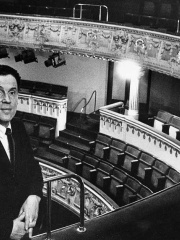
10. Erland Josephson (1923 - 2012)
With an HPI of 68.19, Erland Josephson is the 10th most famous Swedish Actor. His biography has been translated into 34 different languages.
Erland Josephson (Swedish pronunciation: [ˈæ̌ːɭand ˈjûːsɛfˌsɔn]; 15 June 1923 – 25 February 2012) was a Swedish actor and author. He was best known by international audiences for his work in films directed by Ingmar Bergman, Andrei Tarkovsky and Theo Angelopoulos.
People
Pantheon has 132 people classified as Swedish actors born between 1879 and 2003. Of these 132, 83 (62.88%) of them are still alive today. The most famous living Swedish actors include Dolph Lundgren, Stellan Skarsgård, and Peter Stormare. The most famous deceased Swedish actors include Ingrid Bergman, Greta Garbo, and Max von Sydow. As of April 2024, 17 new Swedish actors have been added to Pantheon including Jens Hultén, Eva Melander, and Robert Gustafsson.
Living Swedish Actors
Go to all RankingsDolph Lundgren
1957 - Present
HPI: 73.57
Stellan Skarsgård
1951 - Present
HPI: 72.55
Peter Stormare
1953 - Present
HPI: 69.73
Rebecca Ferguson
1983 - Present
HPI: 67.47
Harriet Andersson
1932 - Present
HPI: 67.33
Britt Ekland
1942 - Present
HPI: 66.77
Inger Nilsson
1959 - Present
HPI: 66.72
Ann-Margret
1941 - Present
HPI: 66.45
Maud Adams
1945 - Present
HPI: 65.63
Lena Olin
1955 - Present
HPI: 65.44
Malin Åkerman
1978 - Present
HPI: 64.65
Krister Henriksson
1946 - Present
HPI: 63.70
Deceased Swedish Actors
Go to all RankingsIngrid Bergman
1915 - 1982
HPI: 79.42
Greta Garbo
1905 - 1990
HPI: 77.34
Max von Sydow
1929 - 2020
HPI: 74.44
Anita Ekberg
1931 - 2015
HPI: 74.00
Bibi Andersson
1935 - 2019
HPI: 70.51
Ingrid Thulin
1926 - 2004
HPI: 68.51
Erland Josephson
1923 - 2012
HPI: 68.19
Michael Nyqvist
1960 - 2017
HPI: 66.17
Björn Andrésen
1955 - 2025
HPI: 65.93
Olof Thunberg
1925 - 2020
HPI: 65.88
Gunnar Björnstrand
1909 - 1986
HPI: 65.01
Gunnel Lindblom
1931 - 2021
HPI: 63.61
Newly Added Swedish Actors (2025)
Go to all RankingsJens Hultén
1963 - Present
HPI: 52.77
Eva Melander
1974 - Present
HPI: 48.66
Robert Gustafsson
1964 - Present
HPI: 48.19
Jonas Karlsson
1971 - Present
HPI: 48.09
Matias Varela
1980 - Present
HPI: 46.97
Malin Crépin
1978 - Present
HPI: 46.81
Kajsa Ernst
1962 - Present
HPI: 46.56
Maria Lundqvist
1963 - Present
HPI: 45.41
Josephine Bornebusch
1981 - Present
HPI: 44.86
Vera Vitali
1981 - Present
HPI: 44.37
Sofia Ledarp
1974 - Present
HPI: 43.31
Moa Gammel
1980 - Present
HPI: 41.80
Overlapping Lives
Which Actors were alive at the same time? This visualization shows the lifespans of the 25 most globally memorable Actors since 1700.


